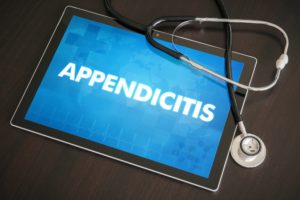 Certain foods that you eat or drink can negatively affect the way your medications work. When drugs and food interfere with each other’s functionality this is known as a “Food-Drug Interaction.”
Certain foods that you eat or drink can negatively affect the way your medications work. When drugs and food interfere with each other’s functionality this is known as a “Food-Drug Interaction.”
According to Salvatore Sica, Pharmacist at Flushing Hospital Medical Center, food can interact with your medicine in one of three ways; it can enhance, delay or decrease the absorption of medication. Changes in your body’s ability to metabolize medication properly can result in an increased risk of side effects.
Knowing which foods to avoid when taking certain medications can decrease the risk of adverse reactions. Here are a few common food-drug interactions you should know:
Grapefruit Juice: Should not be consumed when taking certain medications. Grapefruit juice can block enzymes in the intestines, affecting the way drugs are metabolized by the body. It may allow excessive amounts of the drug to enter the blood which can lead to side effects. Your doctor may recommend that you do not consume grapefruit juice if you are taking medications that are cholesterol-lowering agents as well as some allergy, heart, immune system or anti-anxiety drugs.
Vitamin-K Rich Foods: Blood thinners are often prescribed to people to prevent life-threatening blood clots from developing. Eating foods that are rich in vitamin K such as spinach, broccoli and asparagus can decrease the effects of blood thinners.
Dairy – Calcium-rich foods including, cheese, yogurt or other dairy products can interfere with certain medications such as antibiotics. These medications can bind to calcium and form an insoluble substance that is difficult for the body to absorb.
Alcohol: According to a study conducted by the National Institutes of Health, the most common types of medications that interact with alcohol are high blood pressure, pain, diabetes, antipsychotic, and antidepressant medications as well as sleeping pills. Drinking alcohol while taking these medications may lead to harmful reactions such as hypotension (low blood pressure), liver injury, ulcers or disruptions in your breathing (which can lead to death). It is also important to keep in mind that alcohol-drug interactions are not limited to prescription drugs, harmful reactions can also occur when taking over-the-counter medications.
If you are unsure of how certain foods may interact with your medications, your pharmacist can be a great help in providing this information. It is also recommended that you inform your doctor and pharmacist of any changes in your diet, as they can advise on precautions you may need to take.
For your convenience, a full-service pharmacy is located at Flushing Hospital Medical Center in the Medical Science Building providing prescription services to discharged, emergency department and clinic patients as well as employees. Please feel free to contact our friendly pharmacists at 718-353-3160.
All content of this newsletter is intended for general information purposes only and is not intended or implied to be a substitute for professional medical advice, diagnosis or treatment. Please consult a medical professional before adopting any of the suggestions on this page. You must never disregard professional medical advice or delay seeking medical treatment based upon any content of this newsletter. PROMPTLY CONSULT YOUR PHYSICIAN OR CALL 911 IF YOU BELIEVE YOU HAVE A MEDICAL EMERGENCY.





